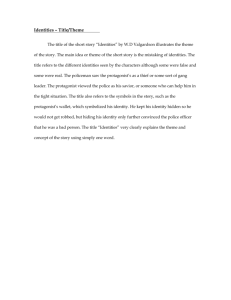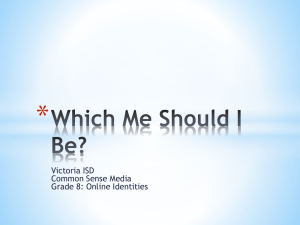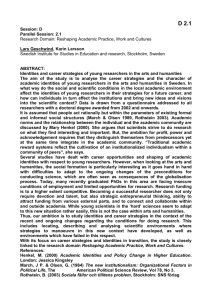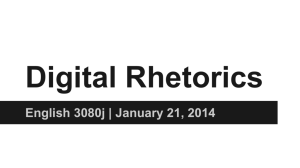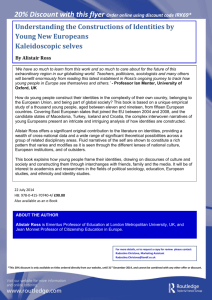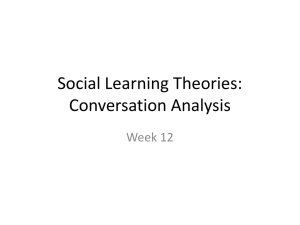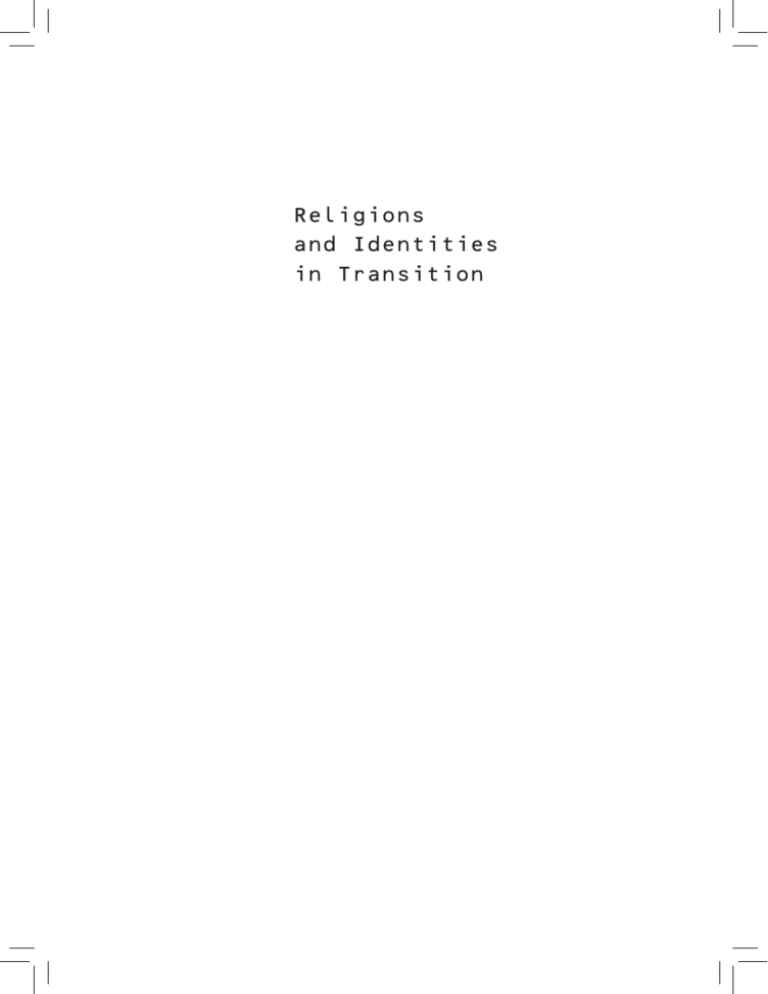
1
Religions
and Identities
in Transition
2
3
edited by
Irena Borowik
Małgorzata Zawiła
NOMOS
Religions
and Identities
in Transition
4
ISBN 978-83-7688-035-8
© Copyright by Zakład Wydawniczy »NOMOS« 2010
All rights reserved. No part of this publication may be reproduced, stored in a retrieval
system, or transmitted in any form, or by any means, without the prior permission of
Zakład Wydawniczy »NOMOS«
Editing of the book is supported by The Minister of Science and Higher Education
Printed in Poland 2010 by Zakład Wydawniczy »NOMOS«
31-208 Kraków, ul. Kluczborska 25/3u
Phone: (+48 12) 626 19 21
e-mail: biuro@nomos.pl; www.nomos.pl
5
Contents
Preface . . . . . . . . . . . . . . . . . . . . . . . . . . . . . . . . . . . . . . . . . . . . . . . . . 7
I. Religion and Identity. New and Old Social Forms
James T. Richardson, Identity Theories, Religious Groups, and the
Effects of Legal Social Control in Central and Eastern Europe .
James A. Beckford, From Religious Heritage to Conversion
in Prisons . . . . . . . . . . . . . . . . . . . . . . . . . . . . . . . . . . . . . . . . . . .
Dominika Motak, New Spirituality, New Science and the Quest
for the Unity of Knowledge . . . . . . . . . . . . . . . . . . . . . . . . . . . . .
Stella Grotowska, Old People in the Roman Catholic Church in
Poland: Successful Aging and Social Capital of Religious
Movements, Groups and Organizations . . . . . . . . . . . . . . . . . . . .
Olga Breskaya, Inside and Outside Religious Identity: Perspectives
from the Orthodox Exhibition-fair . . . . . . . . . . . . . . . . . . . . . . . .
15
32
50
59
75
II. Religion and Public Space
Marilia Fiorillo, The New Religious Situation in Brazil and Its
Reception in the Public Media . . . . . . . . . . . . . . . . . . . . . . . . . . . 99
Urszula Nowak, “Wall of Separation”? Religion’s Presence
in the Public Sphere of a Democratic State – Some Theoretical
Reflections . . . . . . . . . . . . . . . . . . . . . . . . . . . . . . . . . . . . . . . . . . 119
Paulina Napierała, Defending Religious and National Identities.
A Comparative Study between Polish and American Religious
Right Movements . . . . . . . . . . . . . . . . . . . . . . . . . . . . . . . . . . . . 131
6
Contents
Konrad Siekierski, Religious and National Identities in Post-Soviet
Armenia . . . . . . . . . . . . . . . . . . . . . . . . . . . . . . . . . . . . . . . . . . . 149
Marcin K. Zwierżdżyński, Searching and Finding: Personal
Identity in Cognitively Oriented Religious Education . . . . . . . . 163
III. Ritual in Forming and Preserving Identity
Andrzej Szyjewski, Myth and Australian Aboriginal Identity . . . . . 187
Rafał Smoczyński, Mapping the Hegemonic Practices in the Ritual
Abuse Scare . . . . . . . . . . . . . . . . . . . . . . . . . . . . . . . . . . . . . . . . 198
Peter Dirksmeier, The Relation Between Esotericism and Space
in Germany – a Brief Empirical Overview of Recent Trends . . . 214
Anna Niedźwiedź, National or Trans-National? Catholic Shrines
in Contemporary Poland . . . . . . . . . . . . . . . . . . . . . . . . . . . . . . 231
Maria Sroczyńska, Religious Rituals in the Lives of Polish Youth.
On the Threshold of Adulthood . . . . . . . . . . . . . . . . . . . . . . . . . . 247
IV. Religion, Identity and Migration
Shirley Egley and David Sullivan, Religion, Migration
and European Identity . . . . . . . . . . . . . . . . . . . . . . . . . . . . . . . .
Halina Grzymała-Moszczyńska and Joanna Krotofil, Religion and
Social Networks in Catholic Parishes – the Case of Polish
Migrants in Great Britain . . . . . . . . . . . . . . . . . . . . . . . . . . . . . .
Frank André Weigelt, From Here to There: Vietnamese Buddhism,
New Pagodas and Old Switzerland . . . . . . . . . . . . . . . . . . . . . .
Bożena Gierek, Religiosity of Polish Immigrants in Ireland . . . . . .
273
288
305
316
References . . . . . . . . . . . . . . . . . . . . . . . . . . . . . . . . . . . . . . . . . . . . 333
Biographical Notes . . . . . . . . . . . . . . . . . . . . . . . . . . . . . . . . . . . . . . 369
Name Index . . . . . . . . . . . . . . . . . . . . . . . . . . . . . . . . . . . . . . . . . . . 377
7
Preface
Identity as such, is an interdisciplinary notion that is the subject of interest in philosophy, biology, psychology and sociology. Those who study
literature, the arts, movies or pictures also use this notion, and there is
a great deal of fascinating literature concerning it. In the variety of these
perspectives, one element seems to be common – the link between the
problem of identity with the basic rudimentary questions concerning the
essence of humanity and the conditions of humankind and its creation.
This is because identity is rooted in consciousness and self-consciousness. Identity is not possible without a subject, a human identifying
self in a given area of reality, inside and outside of the self.
There are different perspectives in the understanding of identity.
Philosophers refer to it as a sameness. They put stress on the mechanisms of transcending the self, one’s own feelings and time, as the
foundation of identity, which is dominantly understood by them as
applied to an individual (Ingarden 1972: 51). Psychologists focus their
attention on identity that is created in the process of the development
of an individual (Erikson 1959) and prescribe to it four basic meanings:
(1) the conscious feeling of being a separate exceptional individual;
(2) the feeling of internal continuity and stability in time; (3) the
integrational aspect of identity rooted in ego; and (4) the feeling of
accordance of one’s own self-definition with ideals of a group conforming the individual identity from outside (Erikson 1959: 89, 102).
Sociologists put stress on collective identity as such, and as a condition
for the formation of the individual. They also ask questions concerning
the formation of identity in a given social background, the relationship between an individual and collective identities, types, fields and
expressions of identity. It is important from a sociological perspective
8
Preface
for the consideration of the relationship between the type of society
and the identity promoted by it.
In general, it is a shared opinion that in traditional societies, which
are sometimes also called simple or primitive, the question concerning
an individual’s identity was rare, as this identity was rarely the subject
of choice. Identity in these societies was simply given, supported and
shortened by the complete involvement of the individual in group life.
In this type of society – as described by Margaret Mead – “an individual, safely hidden in group life like in a cocoon from the birth till
death” (1978: 4). In this type of pre-figurative culture, as Mead calls it,
there is no chance to ask questions concerning identity, because complete answers are given before the questions arise. The most important
answers are given to questions that do not come: “how I must speak and
sleep, to love and to make money for life, how to be a parent and to die”
(Mead 1978: 31).
Modernity brings about the problem of identity as a question,
because reality looses the status of being taken for granted. As Peter
Berger puts it, in a society there is a connection between a network
of institutions and a repertoire of identities. While in a traditional society, this relationship is obvious, expressed as a metaphor of fate, in
a modern society, identity is a matter of a sequence of choices related to
many issues in some way composed of education, profession, marriage,
the pattern of bringing up children, participation in organizations and
societies and political engagement etc (Berger 1980: 23). Berger argues
that in modern societies, two parallel features related to identity take
place: the space of socially objectivized answers to the questions mentioned above becomes more narrow (or in other words, thicker/more
overcrowded), while at the same time, the level of uncertainty is higher.
This, in Berger’s opinion is the process that inevitably results in increasing reflection and turning to subjectivity. “The outside world becomes
more questionable, and his own inner world becomes more complex”
(Berger 1980: 22).
Taking into account the circumstances described by Berger, the rapid
career of the notion of identity is not surprising in the second half of the
20th century, which is characterized by the process of modernization
and transformation of modernity into post-modernity. If modernization
Preface
9
calls into question the taken for granted identities, we might agree with
the statement that transformation intensifies this questioning. The level
of uncertainty is also higher, the field of possible choices arises and
rapidly multiply for a significant part of the population in transforming
societies. Breaking down the old divisions of Europe, the opening of
borders, the intensive travelling of Central-Eastern Europeans into foreign countries and the intensification of the flow of information through
the liberated mass-media, have given an opportunity for the penetration
of new ideas, values and styles of life into former Communist countries,
bringing elements of culture that are thought of as post-modernity.
A time of transformation is a period of formation of new identities on many levels of social life: institutions (in the structural sense
of organisations: schools, hospitals, factories, churches, foundations
etc.), social consciousness, and procedures of acting etc. All levels of
changing identities relate one to another and contradict each other quite
frequently.
There are a lot of questions concerning the relationship between identity and religion. Is religion present in these macro- and micro-processes
mentioned above? If so – in what ways? How does religion influence
social identity? Has it a formative role for the structures and meanings
of life courses? What aspects of religion and in what circumstances
contribute to identity? How can we understand religious identity? Why
and how do people change their religious identities? What are the directions of the changes of identity in Central and Eastern Europe? What
about in other regions? Does religion continue to be an element of
national identity? In what forms? What are the changes influenced by
the collapse of Communism? In such matters, is Central and Eastern
Europe similar to other parts of Europe and the world, or not? How
differentiated is the CEE itself? What tools can social scientists use to
compare countries? Does the CEE need specific theories?
The authors of these nineteen chapters, organized into four parts of
the book, coming from many different countries, interested in different
phenomena and having a different theoretical background and perspective, try to answer many of the above questions.
The first part combines theoretical considerations on religion and
identity, as well as presenting some examples of empirical research on
10
Preface
these matters. The authors try to answer the question of change in religious and personal identity in various social contexts. The interaction
between social, legal, political and governmental systems and minority
religious groups in Central and Eastern Europe after the collapse of the
Soviet Union is the subject of the chapter by James Richardson. The
author focuses on possible changes in the identities of these religious
groups’ representatives, especially in the circumstances of a negative
state’s attitude towards them and their faiths. A similar issue of the continuity and change of religious identities in a different social context of
a prison and imprisonment in western countries, is the focus of James
Beckford’s chapter. The theoretical approach presenting and interpreting new forms of introducing knowledge into a religious discourse
is the next example of forming new religious phenomena nowadays
(Dominika Motak). The last two chapters in this part show some empirical evidence in this matter: the religious aspects of the lives of elderly
people, the possibilities of activating them in religious organizations
and the building of local communities and relationships around religious
institutions in Poland (Stella Grotowska); and the case of a new form of
presenting the Orthodox Church in Belarus through the exhibition-fair
(Olga Breskaya).
The next part, divided into five chapters discusses the media, politics and education as the arena of the presence of religion, and also
religious symbols as representing the religious identity of groups and
individuals. Marilia Fiorillo discusses a new religious situation in Brazil with a special focus on the public media’s reaction to it, and especially to the increase of Evangelical churches. The second chapter in
this part introduces some theoretical interpretations of the presence of
religion in the public sphere, starting from the most religion-friendly
attitude of Nicholas Wolterstorff, through the moderate perspective of
Jürgen Habermas, and finishing with Robert Audi’s most strict attitude to religions’ ambition of being an active actor in public discourse
(Urszula Nowak). The two next chapters focus on the relationship
between religious and national identities in three different contexts.
The comparison of two: the Polish and US Religious Right movements and their reference to national identities and nationalisms is the
subject of the first (Paulina Napierała), while the post-Soviet Armenia
Preface
11
situation is the subject of the second (Konrad Siekierski). The author
of the last chapter (Marcin Zwierżdżyński) discusses another important dimension of the public sphere: the relationship between personal
identity and religious education in the theoretical perspective of social
constructionism.
In the third part, the authors analyze the role of religious myths and
rituals in shaping and preserving the religious, personal, national and
social identities in different cultural contexts. Andrzej Szyjewski discusses the role of myths in the identity of Aborigines in Australia; moral
panic in America concerning the ritual abuse of children is the subject
of interest for Rafał Smoczyński; and Peter Dirksmeier’s area of interest
is the German case of esoteric rituals and the question of esoterism as
a strictly urban phenomenon. Religious rituals in Poland is the focus
of the last two chapters, the first one discussing the national or transnational character of Polish shrines and pilgrimages (Anna Niedźwiedź),
whereas the second one discusses the importance of the rituals of passage among Polish youth (Maria Sroczyńska). This part is proof that
with the use of many various methods, from various perspectives, and
in many different geographical and social contexts, the role that the two
major elements of religion, myth and ritual, play in constructing such
a complex phenomenon as identity, can be analyzed.
Identity cannot only be seen as a passive object of acting of such
factors as religions or societies, but it should also be seen as an active
object, when playing a crucial role for individuals and groups in many,
and often difficult, situations. This perspective seems to be closer to
the authors who discuss the role of religious identity and the possible
changes of social, collective and individual identities in the circumstances of migration processes, which are the problems dealt with in the
last part of the book. The question of the relationship between religion,
European identity and European citizenship is answered with data from
qualitative research of Polish immigrants in Wales, with a special focus
on children and the school context (Shirley Egley, David Sullivan). The
role of Polish parishes among Polish immigrants in Great Britain is also
discussed in this part (Halina Grzymała-Moszczyńska, Joanna Krotofil),
as well as the religious and social role of Buddhist pagodas of Vietnamese immigrants in Switzerland (Frank A. Weigelt). The last chapter of
12
Preface
this part is a characteristic of religiosity of Polish immigrants in Ireland
(Bożena Gierek).
Many theoretical perspectives can be found: historical, sociological,
and psychological, as well as various empirical qualitative and quantitative methods which are involved in answering the various questions
of religions and identities in this book. Such a variety and complexity
seems to be an inevitable feature of many elements of contemporary
society, which is why this should be the feature of an interesting and
fruitful discussion on such complex phenomena as we can see in identity.
Irena Borowik
Małgorzata Zawiła



